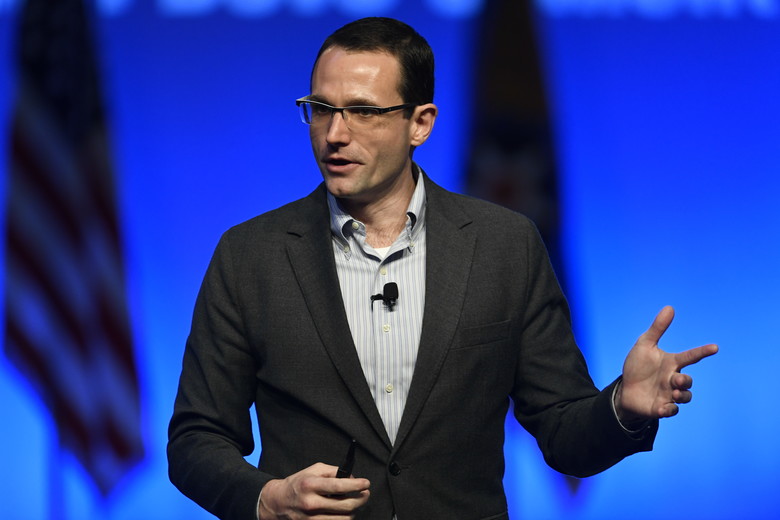
Will Roper
WASHINGTON: The Air Force wants Congress to approve new powers allowing the service to fund space acquisition in ‘blocks’ that would allow it more freedom to shift funds from one specific program to another, says service acquisition head Will Roper.
The idea, he told reporters today, is to give the Space Force acquisition authorities that mimic those used by fast-moving and highly capable organizations such as the Special Capabilities Office and the NRO. The mechanism: putting multiple programs into one budgetary program element (PE) number so priorities can be juggled or monies shifted to ailing programs to help them cope with cost or schedule overruns.
“One of the things that we are very passionate about for space acquisition is trying to consolidate the space portfolio into a few number of program elements,” Roper said, noting that when he headed the SCO “we funded almost all of our programs out of one program element. That’s really important because it let me optimize the portfolio of programs, not just do individual programs,” he explained. “Well, the way that the Air Force and now Space Force put their budget submissions into Congress, it puts all of the programs into individual program elements, and that’s like locking [each] program into a little financial prison.”
Although it is true that other organizations with acquisition powers — including SCO, NRO and the Missile Defense Agency — have such flexibility, it is unclear whether Congress will acquiesce to the same for the Space Force. The 2016 NDAA created a new “major force program” — MFP 12 — for DoD reporting on the national security space budget precisely to overcome: a) the lack of transparency in DoD budgeting for space programs, and b) the long-standing Air Force practice to shift space funds to air power programs that were suffering setbacks. However, an MFP does not allow the Air Force or other space services to move money around without congressional assent.
As late as the 2020 budget request, DoD admitted that it still had not sorted out how exactly to meet the MFP-12 requirement as it was still developing standard practices for determining what should be included or not.
Joshua Huminski, director of the National Security Space Program at the Center for the Study of the Presidency and Congress (CSPC), said wryly that the Air Force request is likely to “require very artful selling to Congress.” He explained in a phone conversation today that congressional leaders already are keeping the Air Force on a short leash regarding space acquisition.
Roper said the request for such new authorities will be included in the space acquisition report Air Force Secretary Barbara Barrett is required to send to Congress under language in the 2020 National Defense Authorization Act (NDAA). That report was due March 31 but has yet to be transmitted.
Roper said the report is finished but is being reviewed by Defense Secretary Mark Esper.
As I’ve reported, Barrett’s report will punt on the question of whether the NDAA-required Space Force acquisition executive will be a fully separate office or will be organized in some fashion as a subunit of Roper’s current shop. It’s no secret that Roper has strenuously opposed a fully bifurcated space acquisition office.
Roper confirmed today that the pending report is concentrating on how the service hopes to use its current, and newly proposed, acquisition authorities to speed the often decades-long process of moving new space capabilities from design to procurement. He explained that the Air Force will wait until after Congress decides on its proposal for future space acquisition authorities before circling back to the organizational question — in effect, meaning that the service will not address the issue until after the 2021 NDAA is passed.
“And then once we determine what will be given to us or not, then for round two, we’ll look at what’s the right way to organize with these new authorities, and at that point we’ll take on the question of whether there should be one or two service acquisition executives,” he elaborated.
The service has until October 2020 to establish the controversial new space acquisition post.
Iran says it shot down Israel’s attack. Here’s what air defense systems it might have used.
Tehran has been increasingly public about its air defense capabilities, including showing off models of systems at a recent international defense expo.


























